How to refer a patient to another doctor
- Inform the patient
- Share information with the receiving doctor
- Document patient referrals
- Manage the patient referral process
Patient referral is a common and important medical practice. Sometimes, a patient’s condition is outside a doctor’s area of expertise, and the doctor needs to refer the patient to a specialist who is more knowledgeable about or experienced in treating the condition. In the United States, for example, doctors refer one in every three patients to a specialist each year. Every referral is meant to ensure the best outcome for the patient.
Despite the importance and frequency of patient referrals, the process isn’t always seamless. A study published in the Journal of General Internal Medicine found that 63 percent of referring physicians were dissatisfied with the referral process — so it’s pretty clear it could use an upgrade.
In this piece, we’ll look at some best practices to improve the patient referral process and ensure that your patients receive superior medical care. We’ll start by explaining some of the reasons that could prompt a patient referral.
Pro Tip
Upgrade your Jotform account today to get access to HIPAA-friendly forms for all your needs.
Scenarios when doctors consider a referral
1. They need help making or confirming a diagnosis
Sometimes, doctors hit a brick wall with a patient’s condition and seek the opinion of another doctor to confirm or make a diagnosis. This is a normal practice and ensures patients receive the best quality of treatment possible.
2. The patient’s condition is outside their typical scope of care
If the condition in question is outside a physician’s usual scope of practice, or they don’t have the necessary facilities for treatment, the doctor normally makes a referral. If a doctor is strongly convinced that a patient would get better quality of care from a specialist or more experienced physician, it’s a good time to make a referral.
3. They want to improve patient access
Patient access is all about making sure patients get the best care, when and where they need it. If there are hindrances to patient access — such as language barriers, inconvenient locations, and busy schedules — these concerns may prompt a referral.
Tips on how to refer a patient to another doctor
To ensure the right outcomes for patients, below are some guidelines and best practices to follow when making referrals.
Informing the patient
For each referral, explain to the patient why it’s necessary. Respond to any questions and address any concerns the patient may have. Ensure that the patient understands who will be responsible for their care after the referral and what communication channels are available to them.
Sharing information with the receiving doctor
One of the main issues with patient referrals is poor information sharing. A study found that 70 percent of specialists feel the quality of patient referral information they receive from other providers is fair or poor.
For the best outcome during a referral, provide all relevant information for the receiving physician. At a minimum, provide the following information using the standard SBAR (Situation-Background-Assessment-Recommendation) method.
- Situation: Explain the patient’s condition and symptoms. Include relevant administrative information — such as the patient’s name, referring physician, and medical unit.
- Background: Describe the patient’s medical history. Include previous diagnoses, medication info, and treatment dates.
- Assessment: Provide details about what you found during your examination and investigation. This includes test results and a preliminary diagnosis (if you have one).
- Recommendation: Clearly state the reason for the referral and what care you would like the receiving physician to provide. Specify time frames, if necessary.
Documenting patient referrals
Two of the most important documents for patient referrals are the referral form and the referral register. The referral form includes all the necessary information that the receiving physician will need to facilitate care for the patient.
The referral register is what your office should use to track all referrals you’ve sent out or received from other healthcare providers. The referral register usually includes provisions for recording follow-ups and feedback from the receiving physician.
Jotform’s patient referral template captures the most important information you need to share during a referral. Jotform provides HIPAA-friendly forms, so patient information stays safe and secure. With Jotform Tables, you can easily create and customize referral registers that serve the needs of your practice.
Managing the patient referral process
Having a referral protocol or workflow is extremely important for efficient referral management. Whether you manage a small practice or a large one, you’ll need to develop, document, and implement a workflow that everyone in your office follows consistently when making referrals.
Take the following steps to streamline your referral process and improve efficiency:
- Centralize all patient referral processes to avoid duplicate effort and facilitate internal communication.
- Conduct regular referral audits to determine the most responsive and least responsive physicians. If referrals to a specific doctor are particularly difficult to handle, consider switching to another physician.
- Go paperless. Leverage technology to monitor and track referrals. Using a digital referral management system makes it easier to perform referral audits and spot inefficiencies in your workflow.
Learning how to refer a patient to another doctor is a crucial part of medical practice — it helps ensure your patients get the best possible care. Jotform makes it easy to centralize and manage every step of the referral process so you can spend less time on repetitive administrative tasks.
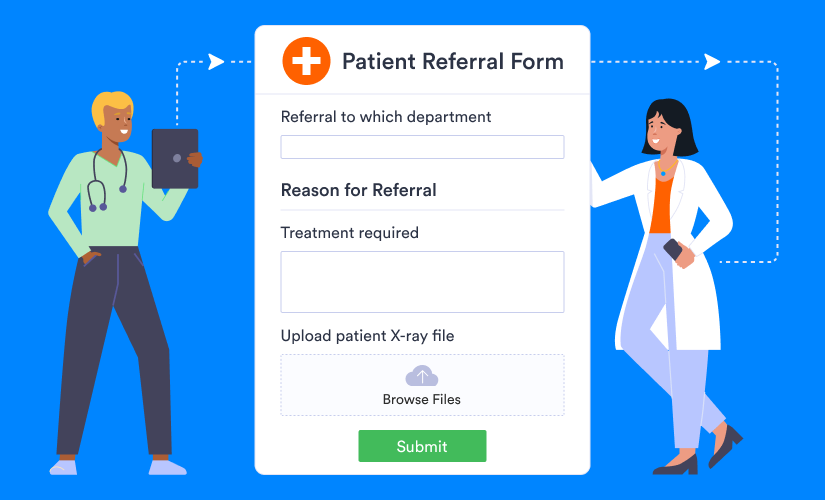
















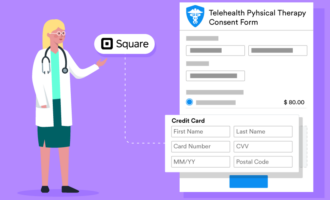







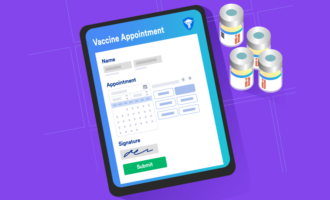













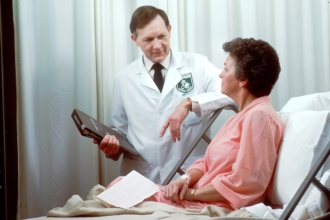


































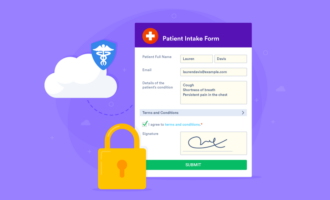





























Send Comment: